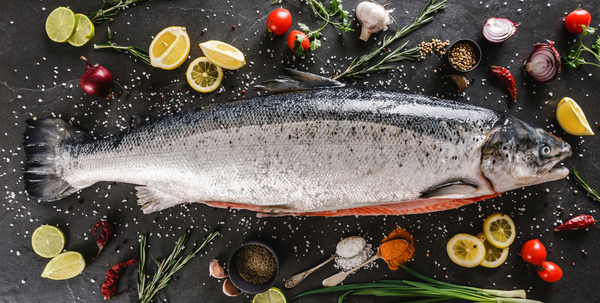Is Salmon High in Mercury?
Updated on May 14, 2021
When people eat fish, one question often comes up: Is it safe from mercury? Mercury is a metal that can get into lakes, rivers, and oceans, and when it builds up in fish, eating too much of it can be harmful to our health.
That’s why many families worry about how much mercury is in the seafood they eat. Salmon is one of the most popular fish around — it’s tasty, healthy, and found in many homes and restaurants.
But how does salmon’s mercury level compare to other types of seafood? Let’s take a closer look to see if salmon is a smart and safe choice for your plate.
Is Salmon High in Mercury?
The short answer is no — salmon is not considered high in mercury. In fact, it’s one of the safer fish you can eat.
According to the U.S. Food and Drug Administration (FDA), opens in a new tab, the average mercury level in salmon is very low. Fresh or frozen salmon has an average mercury level of about 0.022 parts per million (ppm), with the highest recorded at around 0.19 ppm. Canned salmon has even lower mercury, about 0.014 ppm on average.
All of these amounts are much lower than the FDA’s safety limit for adults, opens in a new tab, which is 1.0 ppm of mercury.
How Much Salmon Can You Eat Safely Without Mercury Risks?
According to health experts, including the U.S. Food and Drug Administration (FDA) and the American Heart Association (AHA), eating about two servings of salmon per week is a smart and healthy routine. A single serving is roughly 4 ounces of cooked salmon — about the size of a deck of cards.
If someone is pregnant, breastfeeding, or caring for a young child, they need to be extra careful. Because children’s bodies are still developing, and mothers are supporting a baby, they may be more sensitive — even to small amounts of mercury. That’s why it’s best for them to talk with a doctor or healthcare provider before making seafood a regular part of their meals — even salmon.
Related: How Much Salmon is Too Much?
Seafood High in Mercury
While salmon is considered low in mercury, not all seafood is the same. Some fish naturally build up more mercury in their bodies, especially larger, longer-living fish that eat other fish. These high-mercury options are the ones health experts recommend limiting or avoiding.
According to the FDA, seafood that is high in mercury includes:
- Shark
- Swordfish
- King mackerel
- Tilefish (from the Gulf of Mexico)
- Bigeye tuna (often found in sushi)
These fish can contain mercury levels that are much closer to or even above the FDA’s safety limit of 1.0 ppm. Eating them too often can increase the risk of mercury buildup in the body, which may affect brain health, the nervous system, and, in young children, proper growth and development.
Related: Mercury Levels in Fish
Summary
Salmon is not only delicious but also one of the safest fish you can enjoy when it comes to mercury levels. Compared to other types of seafood, salmon has very low mercury, so it’s a smart choice for families who want the health benefits of fish without the extra risks.
For the best taste and quality, consider trying Wild King Salmon and Wild Sockeye Salmon from Alaskan Salmon Company. These wild-caught options bring you premium flavor and nutrition, all while keeping mercury concerns to a minimum.








